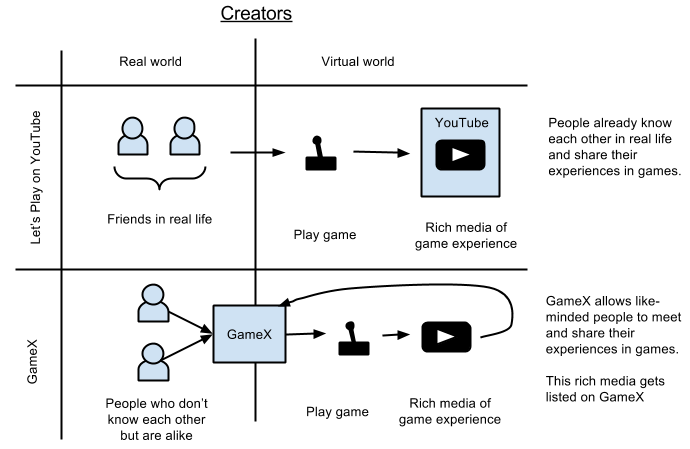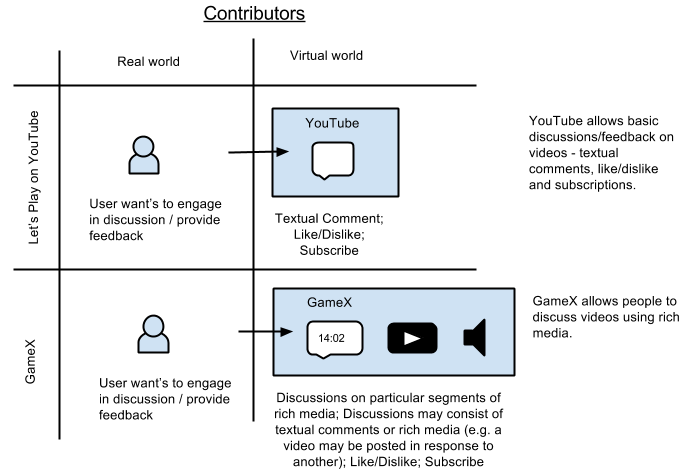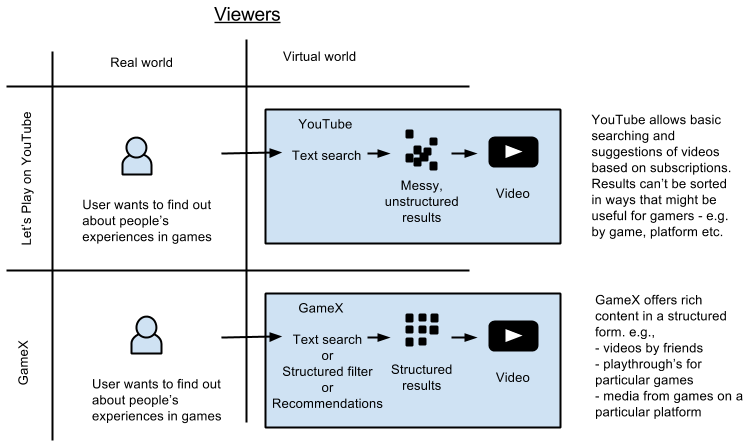So far, we have narrowed our idea down to a social network for sharing in-game experiences. In planning this social network, we’ve found it helpful to consider how users interact with current rich media providers such that they can share their gaming experiences. In the examples below, we compare the user experience of YouTube with our proposed platform, GameX.
We consider three different types of user: creators, contributors and viewers. This categorisation of users is inspired by the work of van Mierlo (2014), who suggested three categories of users within health social networks: Lurkers, Contributors, and Superusers. We consider the “superusers” to be those who create the original videos and contributors to be those who partake in discussion.
Creators
Creators are users who publish rich media about game experiences. On YouTube, our first impression is that creators seem to know each other already (i.e., they do not meet through YouTube) when collaborating to share their game experiences. GameX would provide a mechanism to allow like-minded content-creators to meet, making sharing game experiences more accessible.

Contributors
Contributors are those who participate in discussion on content published by the creators. YouTube only offers basic textual discussion, while GameX would allow discussions using rich media.

Viewers
Viewers are the users who are consuming the content published by the creators and contributors. YouTube does not provide way to find game-related content in a structured way, only in a textual way, making finding content more demanding for the user. GameX would offer a way to search through the content in a structured way, with recommendations based on friends and interests.

Conclusion
By categorising the users and explaining the benefits to each, we have been able to establish the value of the product within this niche. In the next few weeks, we will be doing background research in the area to understand more about how we could design and implement a social network for gaming.
Editors note: After discovering that our market is sufficiently served with existing tools, we formed a new idea, LeapIn.it, which we discuss here.
References
van Mierlo, T. (2014). The 1% rule in four digital health social networks: an observational study. Journal of medical Internet research, 16(2).








Please comment with your real name using good manners.